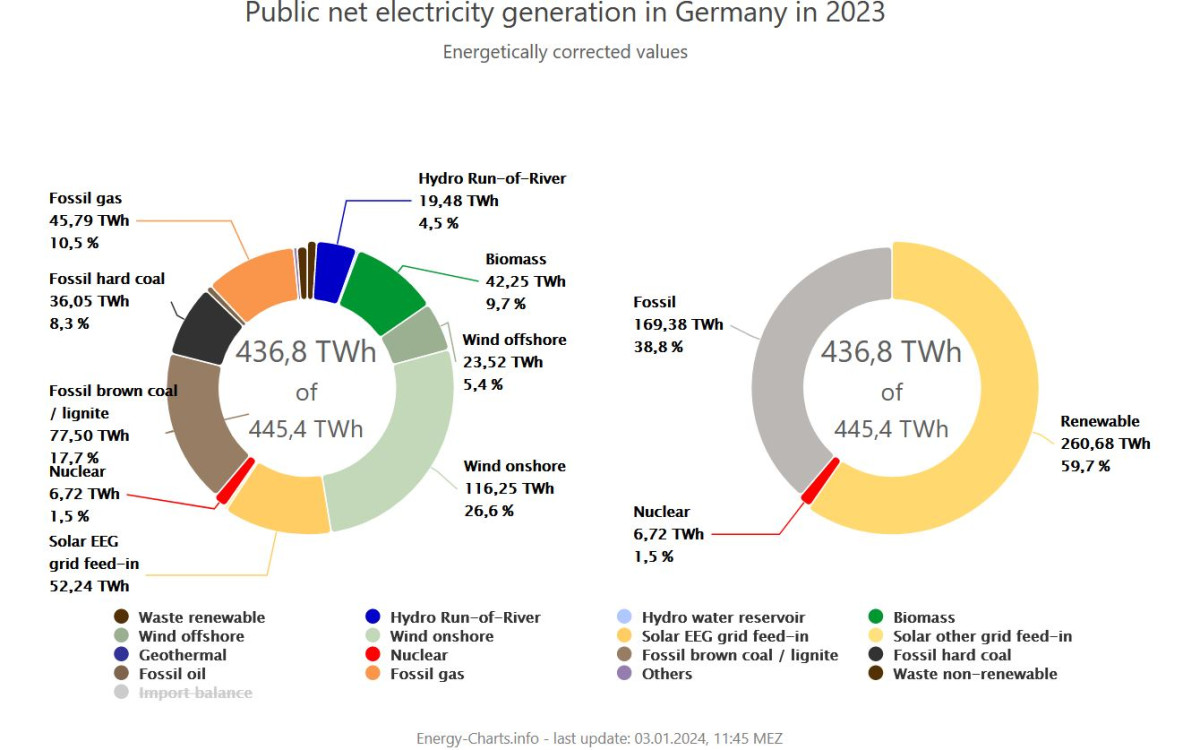Germany's coal power production drops to lowest level in 60 years in 2023
Germany's lignite power production fell to the lowest level since 1963 last year, while hard coal power production even dropped to the lowest level since 1955, an analysis by research institute Fraunhofer ISE has found. The country's entire coal-fired power production fell by almost one third (48 TWh), cutting coal's share of total net power generation to 26 percent. Meanwhile, the country sourced nearly 60 percent (59.7%) of its net power production from renewables, which generated a total of 260 terawatt hours (TWh), an increase of 7.2 percent compared to 2022. With an increase of more than 17 TWh, output from wind turbines grew particularly strong, according to the institute’s annual energy review. The increase in coal-fired power production recorded in the previous year thus was reversed in 2023, the year in which Germany also shuttered its three last nuclear power plants. High gas prices in the energy crisis and a shortfall of French nuclear power production caused a spike in the fossil fuel’s use in 2022.
Germany recorded a negative electricity trade balance of almost 12 TWh in 2023. “Imports were mainly caused by low power prices in neighbouring countries during the summer,” researcher Bruno Burger said. Most of the electricity Germany sourced from abroad came from Denmark, followed by Norway and Sweden. In 2022, the country had a positive trade balance of 27 TWh. The total load in Germany’s power grid was 457 TWh in 2023, 26 TWh less than in the year before. Reasons for the lower grid load were higher average temperatures, higher power prices, and a higher share of solar power for own-use. Moreover, a weak economy decreased power demand in the country. The average wholesale day-ahead power price was 92.2 euros per megawatt hour, significantly less than in 2022 (239.5 eur/MWh) and also slightly less than in 2021 (93.3 eur/MWh).
While the ISE figures on Germany's power mix refer to the share of total electricity generation, the most common statistics refer to the share of power consumption. Preliminary calculations by the Centre for Solar Energy and Hydrogen Research Baden-Württemberg (ZSW) and utility association BDEW showed a renewable share of around 52 percent of consumption in 2023. The government target of an 80 percent renewable share by 2030 also refers to consumption rather than generation.


